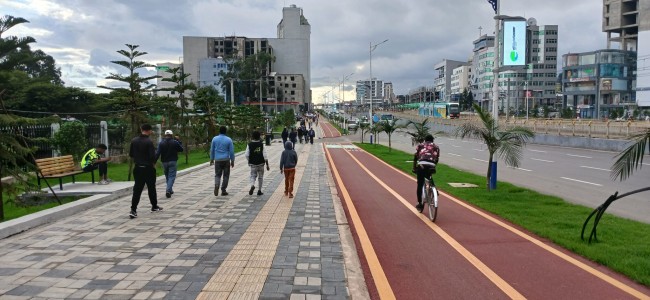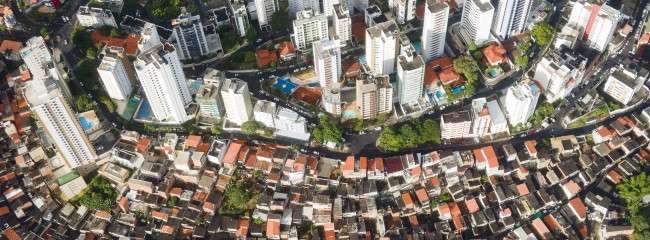The rapid expansion of urban areas can lead to higher per capita urban greenhouse gas (GHG) emissions; habitat fragmentation and biodiversity loss; inefficient use of natural resources like energy, water and land; and loss of agricultural lands.
While there are multiple demographic, economic and policy drivers of urban land expansion, unplanned and unmanaged urban expansion without supporting infrastructure and services often leads to sprawling cities with spatial inequities, characterized by poor access to services and opportunities. This particularly impacts populations that were already the most vulnerable.
For example, unregulated urban expansion is often seen in rapidly growing cities of the developing world, where much urban growth occurs informally through self-built dwellings in locations prone to climate risks or in the urban periphery, disconnected from services and infrastructure. Such settlements — sometimes characterized as slums — are today occupied by more than 1 billion primarily low-income people.
This type of unregulated urban expansion reduces resilience to climate risks like flooding, heat and sea level rise as it encroaches into green spaces, biodiversity zones, coastal areas, urban flood plains and bodies of water. Some of the fastest growing urban areas are in low-elevation coastal zones and face limited water availability.
Urban land use strategies can help limit urban expansion, foster equitable access to services and opportunities, and make human settlements more climate resilient while also protecting regional ecosystems. Such strategies therefore enable cities to address climate mitigation, adaptation and equity goals all at once.
For instance, more compact and mixed land use can reduce emissions by shifting people out of cars to public transit or non-motorized transport modes such as biking, by reducing distances traveled, and by reducing the need for trips altogether. This can reduce the carbon lock-in of roads, buildings and other urban infrastructure built to service expanding areas of cities.
One example is the "15-Minute City" program in Paris, France, which is based on an urban planning concept that encourages car-centric cities to move toward mixed-use neighborhoods where residents are within 15 minutes of essential services by walking, biking or public transport.
Higher densities can improve access to the services and opportunities cities offer urban residents. However, an increase in density can also lead to an increase in housing costs, so it is important that cities incentivize and make investments in affordable housing and transport to ensure that compact cities are also affordable and livable.
Finally, preserving and enhancing green areas and water bodies makes cities more resilient to climate hazards like extreme heat and flooding. These strategies are also associated with positive human physical and mental health outcomes, economic growth, and energy and resource efficiency.
A city is a system of systems, bringing together transportation, energy, buildings, water, waste management and more. Transforming these interconnected systems is vital to achieving climate and development goals.

